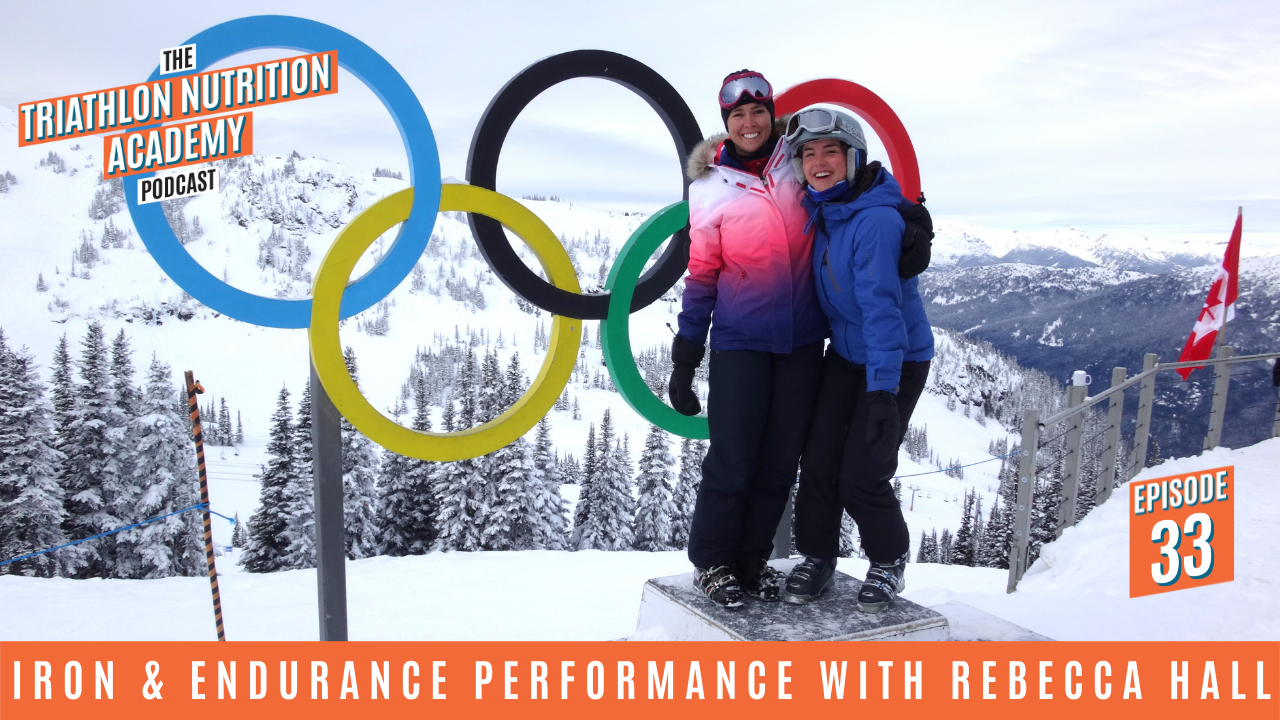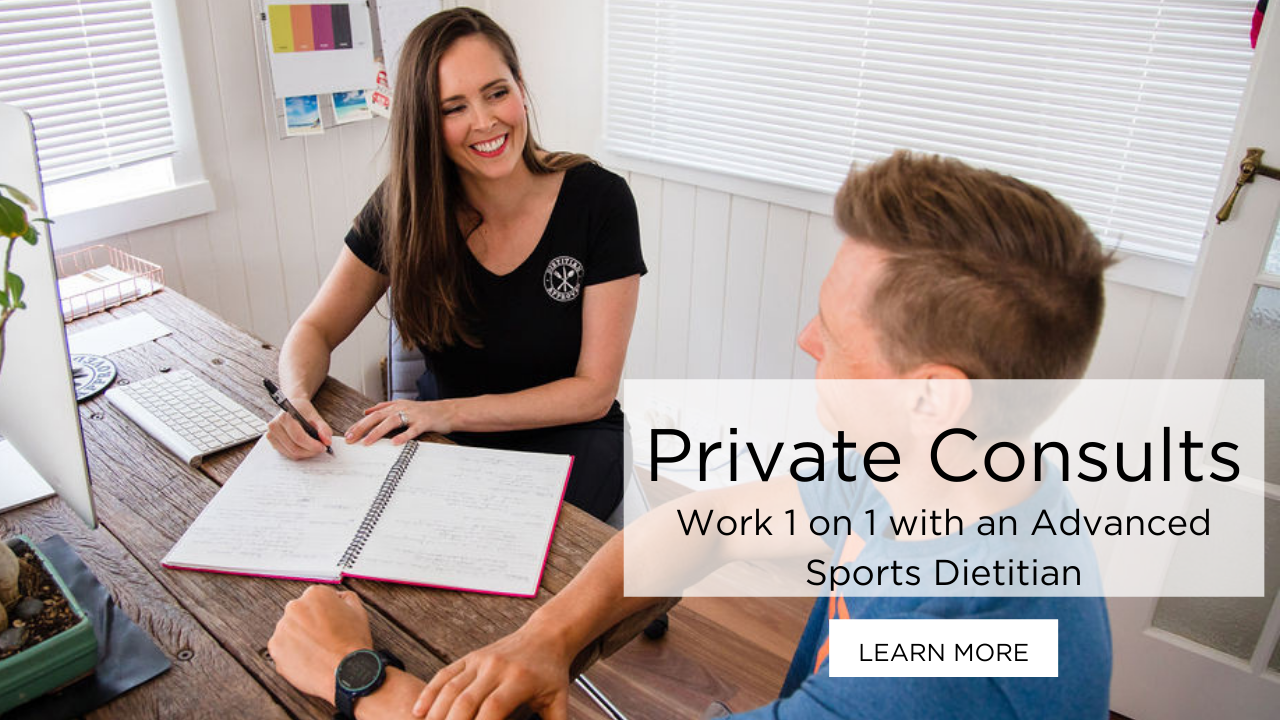Iron & Endurance Performance with Rebecca Hall

Iron & Endurance Performance with Rebecca Hall
Do you feel tired, lethargic or fatigued and are not sure why? Maybe you need to get your iron levels checked…
As an endurance athlete, you should have a basic understanding of why iron is so important and know where you can get it from your diet. But iron absorption is a little more complicated, as what's actually in that food doesn't necessarily all get digested and absorbed.
On the podcast, I spoke with fellow Advanced Sports Dietitian, Rebecca Hall to get the lowdown and her tips on all things Iron. Rebecca worked with some of the athletes competing at the Beijing 2022 Winter Olympics and Paralympics and recently submitted her Master's in iron supplementation for endurance athletes.
Why is iron such an important nutrient for active people?
Iron plays a key role in building the haemoglobin and myoglobin that carries the oxygen around the body. Think about haemoglobin as the transport vehicle - iron plays a role in creating the taxis that carry oxygen around the body - from the organs to the working muscles - so the body can actually use oxygen.
Aerobic exercise, in particular, requires oxygen – without it being transported around the body it’s a lot harder to exercise.
What are the different sources of iron in our diet besides red meat?
Fortified cereals, nuts, legumes, green leafy vegetables, chicken, fish, seafood and eggs
However, not all of the iron in food is absorbed. That's why red meat is promoted as a great source of iron - it's more bioavailable than some of those other sources, which makes it much easier for the body to get what it needs.
What is the difference between the two types of iron - haem iron and non-haem iron?
Haem iron
- is from animal sources
- easily absorbed by the body
- goes through the digestive system, is readily taken up in the gut for absorption and then used as iron within the body
Non-haem iron
- comes from non-animal sources i.e. plant-based sources of iron.
- much harder for the body to absorb because it comes in a complicated form
- when digested it readily forms complexes with other foods eaten at the same time.
- much more likely to get trapped in the gut and pass all the way through it, rather than be absorbed, so we just don't get as much iron from those foods, even though there's quite a bit of iron in them.
What’s the difference in the absorption of haem iron vs non-haem iron?
There are individual differences in absorption but the bioavailability ranges from:
- Haem iron absorption is 20% to 30%
- Non-haem iron is between only 1% and 10%
What can we do to help increase the absorption of iron?
- Ensure you get enough Vitamin C in your diet on a day to day basis. Find foods that are rich in vitamin C and co-ingest them with iron-rich foods – it doesn’t have to be a glass of orange juice. You could include things such as a handful of strawberries, kiwifruit, capsicum, plus lots of different coloured fruit and vegetables –use real food, rather than a high dose Vitamin C supplement.
- Don’t consume foods that inhibit iron absorption at the same time e.g. calcium (dairy and almonds for example), tannins in tea and coffee
- The time of day you consume iron is also important – iron absorption is better earlier in the day when hepcidin levels are lowest
What other factors do we need to consider when it comes to managing our iron?
- Hormones, our general health and our immune system can impact the absorption
- Women’s menstrual cycle can negatively affect iron levels
- Blood donations or blood loss due to injury or surgery will drop iron levels
- For endurance athletes who train multiple times a day and/or of long duration, they need to be aware of a hormone called hepcidin that’s released in response to exercise. It reduces the body’s ability to absorb iron for the following 24 hours.
Do you need to take an iron supplement?
- First book in with your GP and get your iron levels checked. There’s no need to supplement unless you’re deficient. Don’t rely on a GP to be across your increased requirements as an athlete (your needs are different to someone who is sedentary or does very little exercise).
- Look at engaging a sports dietitian to help manage your iron intake.
- Don’t take an iron supplement as a safety blanket. Too much iron is toxic and the body struggles to get rid of it. High doses or iron from supplements can sit in the gut unabsorbed, interacting with microflora and bacteria causing GI issues.
Any tips for triathletes on how to best manage their iron moving forward?
- Consume (and prioritise) iron-rich foods on rest days if you have one
- Try and include different forms of iron throughout the week. And if you’re including non-haem sources of iron, make sure you’re eating vitamin C in your diet
- Separate tea, coffee and dairy consumption from your iron-rich foods by at least an hour.
To go deeper, listen to the Triathlon Nutrition Academy Podcast Episode 33: Iron & Endurance Performance.
If you’re interested in joining the Triathlon Nutrition Academy, pop your name on the waitlist NOW | Join the TNA Waitlist
If you are looking for a Sports Dietitian and want to learn more about working with me, click HERE to see what I offer for private, 1 on 1 consultation.




